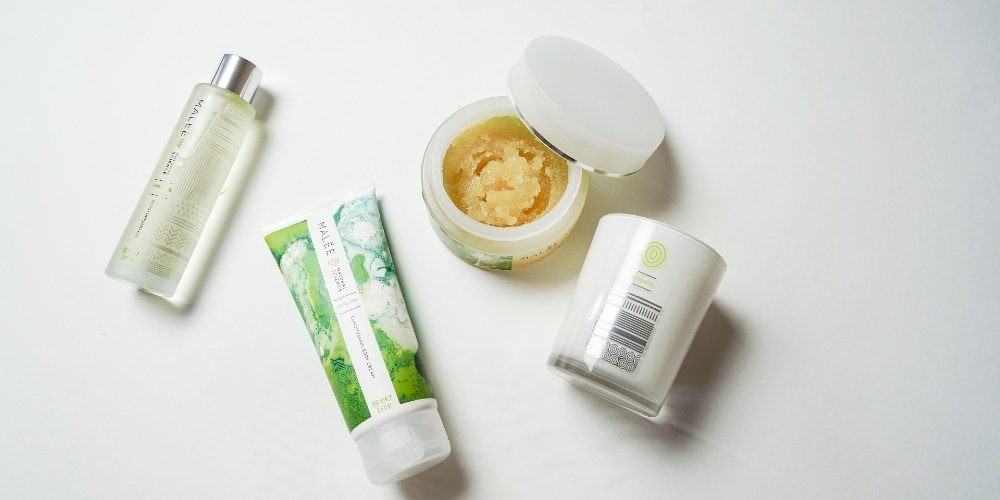Your skin is the largest organ of your body, making up 16% of your overall structure. It provides a protective barrier against contaminants, helps to regulate the body’s temperature and locks in the moisture needed for most bodily functions. When you look at it like this, caring for your skin becomes one of the most important things you can do.
Here at Malée, we use 100% natural active ingredients to create products that nourish the skin and keep it supple. But, throughout history, the cosmetics industry has made use of synthetic ingredients that were later proven to have more detrimental effects than good. As a consumer, having the information you need to make an informed decision about your skincare is vital. That’s why we’re bringing you the skincare ingredients you should avoid to achieve that healthy, glowing skin you’ve always dreamt of.
Aluminum
While you may think of aluminum in terms of drinks cans, the salts from this metal have long been used in antiperspirants. In fact, they are one of the only FDA approved active ingredients to be used in this way. While they help to dissolve sweat and temporarily inhibit the flow of sweat, some research has shown that toxicity levels are through to have an impact on the presence of cancer cells. Cosmetic OBS published an article in 2011 showing that these neurotoxic effects were noted in animals. In addition, by absorbing moisture, they risk stripping your skin of its natural water levels and causing dryness.
DEA (diethanolamine)
DEA is commonly used in cosmetics to give it a creamy or sudsy texture. It is also commonly used to rebalance out the pH levels in products that are too acidic. This makes it the ideal choice for moisturisers, soaps, cleansers and shampoos. High exposure to these chemicals has been shown to cause changes in both the skin and the thyroid. Research from the FDA notes that a study in 1998 found an association between DEA-related ingredients and cancers. And, for DEA-related ingredients, the same study suggested a carcinogenic response too. In relation to skin, DEA causes irritation. Cocomide DEA allergy is found in patients with occupational hand dermatitis, causing severe dryness and cracking. As a result, DEA is one of the skincare ingredients to avoid.
Sodium Lauryl Sulfate
This chemical is used widely in soaps, shampoos and shower gels. It is listed as SLS or SLES in the ingredients list and helps to trap oil-based dirt so it can be washed away easily with water. While this means you feel cleaner quicker, sodium lauryl sulfate isn’t selective on the oils it removes from the skin. It often removes the ones our skin naturally produce as a protective barrier against moisture loss. With regular use, this causes dry skin, inflammation and, on occasion, severe allergic reactions. It has also been linked to cases of dermatitis and eczema.
Urea and DMDM Hydantoin
Found in body soaps, washes and hair products, these two products are preservatives. They help cosmetics to last much longer than naturally possible by releasing formaldehyde over time. In addition, they are both noted as being antimicrobial and antifungal. And, as a result, are found in many different products. However, formaldehyde is also known as a carcinogen and has been shown to cause skin irritation. Dryness, redness and itching are all signs of an adverse reaction. As such these two products are amongst the skincare ingredients one should avoid.
Parabens
Another preservative used widely across a number of cosmetics, parabens have been surrounded by controversy in recent years. They are considered to be xenoestrogens which means they mimic the appearance of estrogen in the body. Some studies have shown that this copying skill also means they can cause an increase in breast cancer cells or block the effectiveness of chemotherapy agents including tamoxifen. With the ability to elevate cellular level damage caused by UV exposure, they also increase the risk of skin cancer.
Polyethylene Glycols (PEGs)
These petroleum-based compounds are found in creams and other thick products. They are used to accentuate softening and help improve moisture retention in the skin. Being an absorption enhancer, they don’t discriminate against good or bad ingredients. Over time, this can reduce skin’s moisture levels, speed up skin’s ageing and cause overall irritation. PEGs of different sizes can penetrate through injured skin and leave you with redness and soreness.
Phthalates
Phthalates aren’t generally listed on ingredients labels found on cosmetics which means they can be difficult to detect. They are chemicals that are commonly used to increase the flexibility and strength of plastics. In many fragrances, they are used to fix those rich smells in place for longer. The most commonly found are DMB, DBP and DEP with only the last being regularly used in today’s readily available cosmetics. Research has shown a link between the use of these chemicals and poor skin health. They strip away moisture and increase the risk of dryness, irritation and redness.
Conclusion
In recent years, research into synthetic chemicals has been shown to cause damage to our bodies and skin alike. This is one of the reasons why we use science-based research and knowledge of the power of nature to create the Malée range. Our focus on 100% natural active ingredients and scientific research allow us to create products that are kind, beneficial and gentle on your skin every single day.






